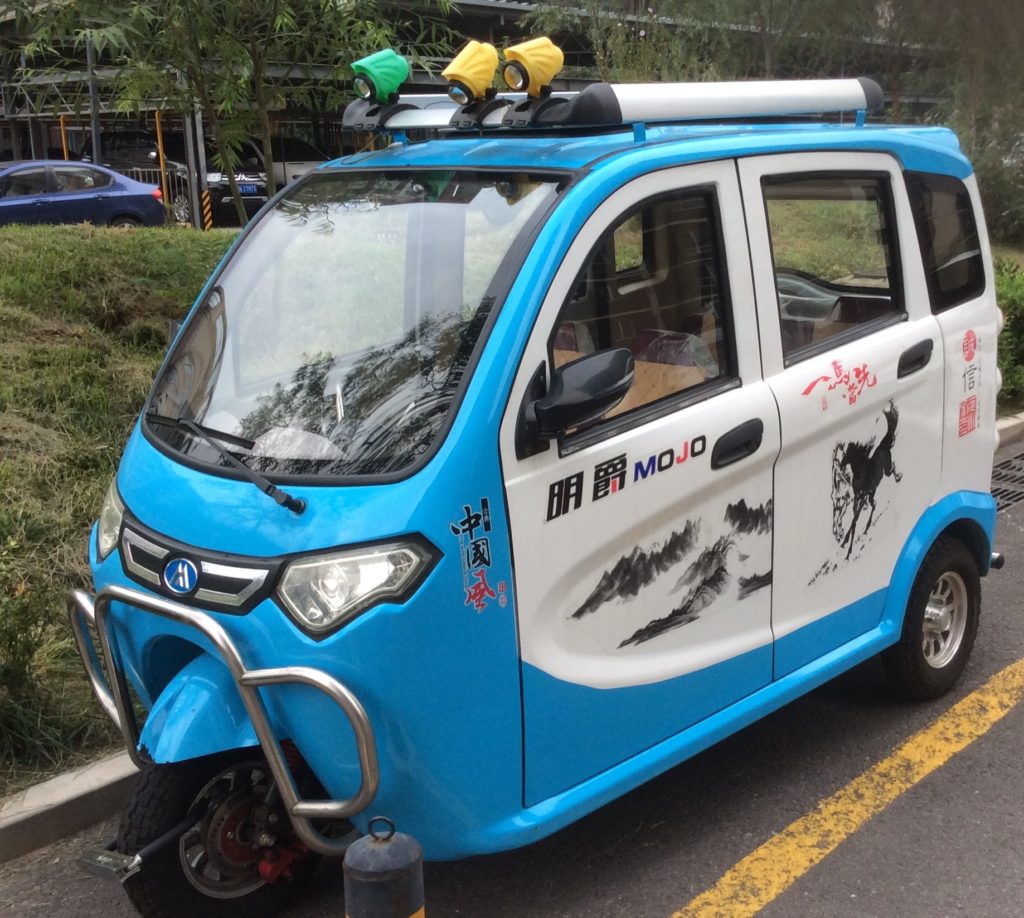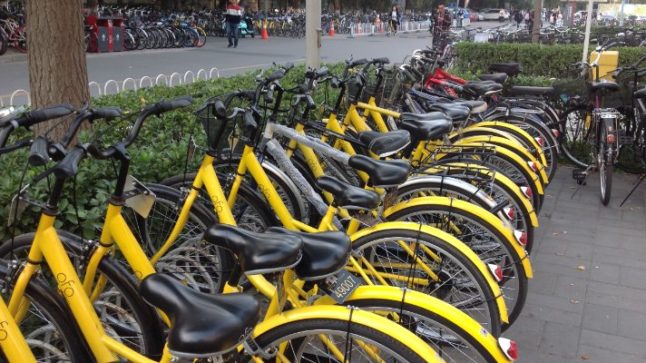This the fourth and final article on “assets in the wild” as a powerful new economic engine, most visibly manifested in bike-sharing in China. My basic argument in Part 1, 2, and 3 is that the meteoric rise of Mobike, Ofo and other bike-sharing companies is because of their pioneering use of assets that can be released in great numbers into public spaces. These “wild assets” can then exist and sell, mostly independently on their own.
But pulling back from all the theory-stuff, let me make a final point about winning and losing in bike-sharing. It’s ultimately all about utilization. That’s the key number. And this raises the fascinating topic of herd size vs. herd intelligence.
Bike Sharing Is Ultimately All About Utilization
Everyone is talking about the low pricing of these bikes versus the likely cost. How can you spend 2,000 rmb on a bike and charge 1rmb per hour? There is a lot of speculation about profitability.
I have argued that current behavior is mostly a short-term phenomenon as companies fight for market share using investor capital. But ultimately, the profits are not going to follow from trip price vs. bike cost. Profitability is going to depend on the utilization of the bikes. If a bike is generating $1 per day in rentals, it is losing money. If a bike is generating $7 a day, it is making money.
And this is where I think the whole subject of wild assets and bike-sharing gets super cool. Because what ultimately determines utilization?
- Certainly, the number of bikes deployed matters.
- Customer preferences and habits matter.
- Ease of use is a big deal.
- And company marketing and reputation matters.
- But the biggest factor that will drive utilization (and therefore company success or failure) is having your bikes in the right places at the right times.
And that is when the conversation changes from individual bikes to herds. How many bikes do you have? How big is your herd? Are these bikes in the right places at the right times for customers? How smart is your herd?
Herd Size vs. Herd Intelligence
I think the first year of bike-sharing was mostly a fight based on fleet size, or as I like to say “herd size”. You deployed lots and lots of bikes. Your bikes were then on every corner and having lots of bikes in an area made you more convenient. And it gave you a powerful marketing and sales ability (as detailed in Part 2).
But bike-sharing in China is now becoming a fight between smart and dumb herds. Having your bikes “in the right places at the right times” is about herd intelligence. Do you know the 35 places where people really want bikes at 2pm on Saturday in Wuhan? Do you know how those places change when it rains? And can you rebalance your herd’s locations to maximize utilization in this situation? Can you rebalance in real time if things change?
This is where Mobike appears to have a real advantage. Because from day one, they built “smart bikes” that always tracked movement and location, not just when the bikes were locked and unlocked. Their bikes were manufactured in-house (everyone else has them made externally) and they have always had smart locks and GPS. This data on usage has been accumulating from the beginning.
Initially, this gave them a primitive sort of herd intelligence. They could identify non-used or damaged bikes by their lack of movement – and then repair them or put them in better locations. They could move bikes when they accumulated at the bottoms of hills and such. And apparently, bikes that move out of a city tend to keep moving outward. So they could bring them back to town. Early-on, Mobike knew the movements of all their bikes and could reposition their herd somewhat by offering red envelopes or by sending operations staff to get them.
Today, bike herds are getting smarter and smarter. After 18 months of data across hundreds of cities, the leading companies know where people are moving every day. And this big data is increasingly being combined with AI. So bikes are increasingly ready and waiting for people when they likely need or want one. Such as when the subway systems closes at night. So if it feels like these bikes are increasingly following you, it is because increasingly they are. The herds are getting smarter and smarter.
You can see this same sort of “big data plus AI” approach in several companies in China today. Didi-Chuxing, Toutiao, Meituan-Dianping, and Ele.me are all gathering big data and getting smarter. For example, Didi reportedly handles 20 million rides daily and can predict where users want to go with 90% accuracy. According to Tech in Asia, Mobike collects 20 terabytes of data every data from 25 million rides on its bikes. They can apparently predicate supply and demand and even illegal parking.
So herd intelligence is becoming increasingly important. But bicycles don’t move that independently (yet). Autonomous cars will be another story. Smart bicycles compensate for their limited mobility with herd size. You can basically blanket a city with bicycles. But for more expensive assets like drones, cars, security assets and vending machines, you really have to get them to the right locations precisely to get higher utilization. A non-used bicycle doesn’t cost you that much. A non-used circling truck or drone does. Again, winning and losing it’s ultimately about utilization.
Assuming Mobike is getting better at fleet management, compared to dumber bike herds, that should get them higher utilization. Higher utilization should make them more profitable. And that superior cash flow should enable them to outspend their rivals on R&D and on the number and quality of bicycles deployed. This, in theory, will make them even smarter. So there might be a virtuous cycle happening in the next phase of bike-sharing.
Last Point: This Is Just the Beginning of Assets in the Wild
Assets that can live and sell in the wild in large numbers, outside of traditional retail spaces and independent to varying degrees, are a pretty cool idea. And it raises the question of what’s next? Here are a couple of predictions:
- Wild assets will become more mobile. Smart bikes are for short distances. But shared electric bikes can go much farther. And shared electric vehicles could, in theory, move around the whole country. And couldn’t smaller vending machines, devices or kiosks reposition in office parks and universities? Couldn’t long-haul transport services move between cities on their own one day? Whether directed, assisted or autonomous, it is not hard to see that assets that exist mostly independently are going to be a lot more-mobile eventually. Wild assets is colliding with both new retail and robotics.
- Wild assets will increasingly find and follow you. Mobike knows which street corners are the busiest at what times. As mobility and herd intelligence increase, these assets should increasingly be able to seek out and find demand. Taxis are going to move autonomously soon. Drones can already move around and spray crops without being piloted. Are these assets going to increasingly find us throughout our days?
 Could herds of autonomous or driven karts follow consumers around the city?
Could herds of autonomous or driven karts follow consumers around the city?
- The roads, offices, shopping malls and the skies are next. When I leave my apartment, I am met by hundreds of bicycles waiting just outside my front gate. Will I see hundreds of devices positioned or moving around my office park or university campus soon? How about fleets of vehicles moving on their own on the highways and roads? Will I soon see fleets of drones in the sky and coming up to my apartment window? I am mostly looking at the roads, shopping malls, offices and skies as the next locations for these assets (after sidewalks). And of course, this raises a question which cuts across all this discussion: Who will govern how public spaces are used if assets are increasingly being released into them in large numbers?
That’s it for my four articles on this subject. Yeah, it was kind of a lot. But it’s a fun subject to think about. Thanks for reading, Jeff
Part 1: My Explanation for the Stunning Power of Mobike, Ofo and China Bike-Sharing
Part 2: How Bike-Sharing Grows So Fast. And For Free
Part 3: How New Retail is Colliding With Bike-Sharing in China
——-
I am a consultant and keynote speaker on how to accelerate growth with improving customer experiences (CX) and digital moats.
I am a partner at TechMoat Consulting, a consulting firm specialized in how to increase growth with improved customer experiences (CX), personalization and other types of customer value. Get in touch here.
I am also author of the Moats and Marathons book series, a framework for building and measuring competitive advantages in digital businesses.
Note: This content (articles, podcasts, website info) is not investment advice. The information and opinions from me and any guests may be incorrect. The numbers and information may be wrong. The views expressed may no longer be relevant or accurate. Investing is risky. Do your own research.
photo by jeff
